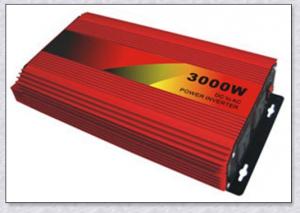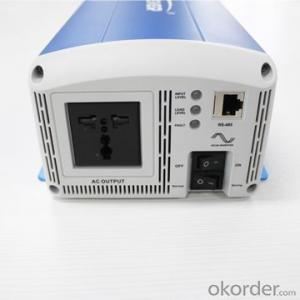Solar 24v Inverter
Solar 24v Inverter Related Searches
Ac Inverter For Solar Panels Solar Panel With Ac Inverter Gas Furnace With Ac Panda Hot Water Bottle Cover Minion Hot Water Bottle Cover Abb Solar Water Pump Inverter Solar Water Pump Philippines Extra Long Hot Water Bottle Solar Panel Dc To Ac Inverter Old Fashioned Hot Water BottleHot Searches
Inverter Size For Solar System Solar With Inverter Price Solar Inverter With 2 Battery China Solar Inverter 3kw 220v China Solar Inverter 3kw Inverter Solar System Price 1 Kva Solar Inverter Price Solar Inverter 1 Kva Price 1 Mw Solar Inverter Price 12v Solar Inverter Price Solar Inverter Charger Price Sine Wave Solar Inverter Price Sma 3kw Solar Inverter Price 3kw Solar Inverter Price Solar Inverter Sine Wave Type Of Inverter For Solar Types Of Inverter For Solar Used Solar Inverter For Sale Inverter Size For Solar System Solar Edge Inverter For SaleSolar 24v Inverter Supplier & Manufacturer from China
Okorder.com is a professional Solar 24v Inverter supplier & manufacturer, offers integrated one-stop services including real-time quoting and online cargo tracking. We are funded by CNBM Group, a Fortune 500 enterprise and the largest Solar 24v Inverter firm in China.Hot Products
FAQ
- No, solar panels cannot be directly connected to the grid without an inverter. The inverter is necessary to convert the direct current (DC) generated by the solar panels into alternating current (AC) that is compatible with the electrical grid.
- Yes, a solar inverter can be used in standalone systems. Standalone systems, also known as off-grid systems, are not connected to the main power grid and rely on alternative energy sources such as solar power. In these systems, a solar inverter is essential as it converts the direct current (DC) generated by the solar panels into alternating current (AC) which can be used to power household appliances and other electrical loads.
- Yes, a solar inverter can be used for off-grid applications. Off-grid systems typically rely on solar panels to generate electricity, and a solar inverter is an essential component that converts the DC power produced by the solar panels into AC power that can be used to power various appliances and devices. This enables off-grid users to harness solar energy and use it to meet their electrical needs in remote or isolated locations where grid connectivity is not available.
- Several reasons highlight the significance of overcurrent protection in a solar inverter. Firstly, the conversion of direct current (DC) generated by solar panels into alternating current (AC) to power electrical devices is the responsibility of solar inverters. Throughout this conversion process, there is a potential risk of an overcurrent situation occurring, wherein the inverter surpasses its rated capacity. The consequences of such a scenario include overheating, damage to inverter components, and even fire hazards. Secondly, overcurrent protection is crucial for safeguarding the entire solar power system. By promptly detecting and interrupting excessive current flow, it prevents harm to solar panels, the inverter, and other connected electrical equipment. Additionally, it serves as a defense against electrical shocks and other potential hazards that may arise from an overcurrent situation. Furthermore, the maintenance of efficiency and performance in the solar inverter heavily relies on overcurrent protection. When an overcurrent event occurs, the inverter has the capability to shut down or reduce its output, effectively preventing further damage. This proactive approach ensures minimal downtime and guarantees the solar power system continues to function at its optimum capacity. Moreover, meeting regulatory and safety standards is another essential aspect of overcurrent protection. Various countries and regions have specific guidelines and requirements governing the installation and operation of solar power systems. Adhering to these standards is essential to ensure personnel safety, protect the environment, and mitigate any potential legal or financial liabilities. In conclusion, the safety, efficiency, and performance of the entire solar power system heavily rely on the presence of overcurrent protection in a solar inverter. It prevents damage to the inverter and other equipment, safeguards against hazards, and ensures compliance with regulatory standards. Consequently, implementing reliable and effective overcurrent protection mechanisms in solar inverters is imperative.
- Yes, a solar inverter can be used with dual MPPT inputs. Dual MPPT (Maximum Power Point Tracking) inputs allow the inverter to optimize the power output from two separate solar arrays or strings, maximizing energy production even if the panels have different orientations or shading conditions. This feature is particularly useful in situations where there are multiple arrays with varying characteristics.
- Solar grid inverter does not merge into the grid, direct access to the load to the load power supply?
- In foreign countries due to the higher penetration rate of the car to go out to work or travel can be connected with the inverter battery drive electrical and various tools work.
- What are the methods of photovoltaic grid-connected inverter control
- Sine wave output inverter control integrated circuits, sine wave output of the inverter, the control circuit can be used microprocessor control, such as INTEL company produced 80C196MC, Motorola produced MP16 and MI-CROCHIP company PIC16C73 and so on, these single-chip microcomputer has a multi-channel PWM generator,
- The role of voltage regulation in a solar inverter is to ensure that the output voltage of the inverter remains stable and within a certain range, regardless of fluctuations in the input voltage from the solar panels. This is important as it allows the inverter to effectively convert the DC power generated by the solar panels into AC power that can be used by household appliances or fed back into the grid. Voltage regulation helps protect the connected devices from voltage spikes or drops, optimizes the performance of the inverter, and ensures the safe and efficient operation of the entire solar power system.













































